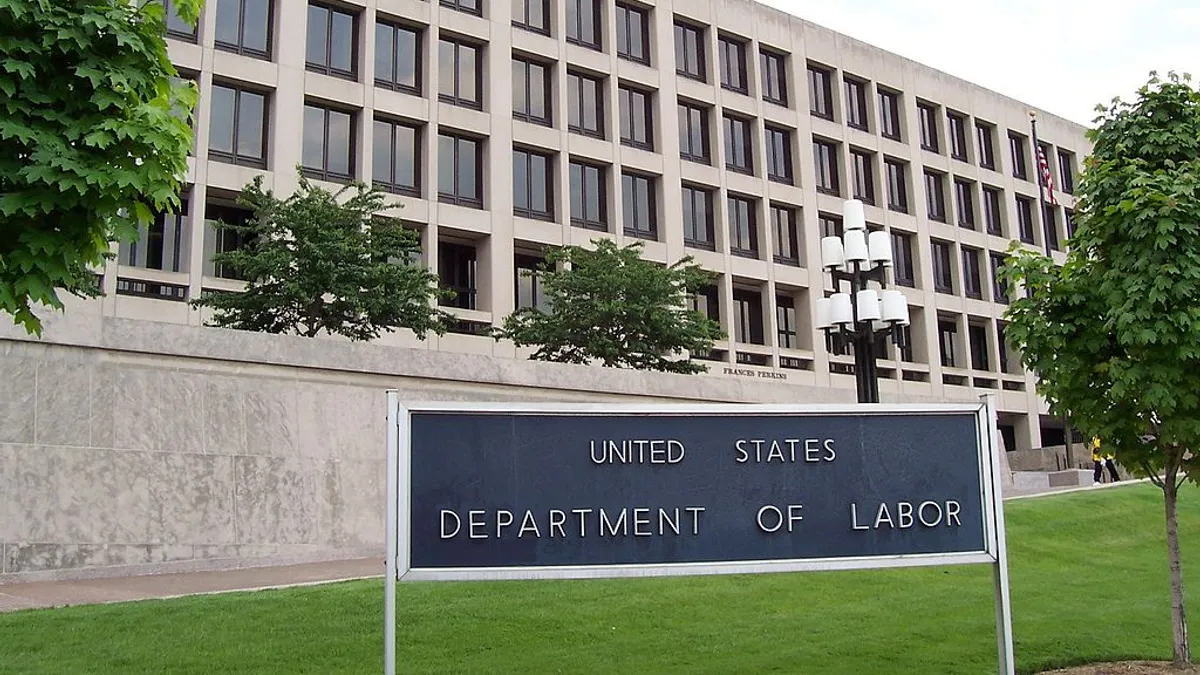Matt Nusbaum is the director of the BCG Institute for Workforce Development (BCGi). Views are the author's own.
U.S. Department of Labor (DOL) compliance audit site visits are the business equivalent of a root canal. No one looks forward to them. People want to delay them as long as possible. And waiting to see how they turn out can be excruciating.
While many audit elements can feel beyond your control, it's still possible to be proactive in the compliance audit process and take charge of what you can. The most successful DOL audit cases are those in which employers take pragmatic stances throughout the process and play an active role from beginning to end.
This starts with ensuring that you're fully — not just technically — compliant. Many federal contractors, for example, mistakenly assume it's enough to have basic EEO/Affirmative action elements in place. Posting a policy in the break room is just the beginning of what's required for compliance, though. Compliance officers are looking to see the extent to which the policy on the poster is being followed and lived out in the company. Consequently, you'll want to make sure reality aligns with regulations. Announcements, verbiage and internal principles should all exemplify active compliance — not just follow the letter of the law.
If your compliance is found to be lacking, you won't go to jail. But there are plenty of penalties for noncompliance you still don't want to face, including potential legal damages. DOL regularly enters into settlement agreements and consent decrees — or wins court orders — to collect compensation for alleged discrimination victims.
Possibly worst of all, those damages are published on the agency's website and in press releases, causing public relations nightmares for the affected companies — offering more than enough incentive for you to ensure that the compliance audit process, particularly the on-site visit, goes as well as possible. How, then, should you prepare?
1. Operate from a proactive standpoint
Compliance officers are taught to be on the lookout for red flags that an employer may be scrambling or trying to dodge them. That said, respond on time and resist the temptation to ask for deadline extensions.
The easier you make the process initially, the less you'll look like you have something to hide. Any good compliance officer can form a sense of how the audit will go by first impressions. Ensure your first impression says, "We're not worried about you finding potential violations because there are none to find." Exude an air of confidence and goodwill, even if you're feeling nervous or put out.
2. Follow up with the compliance officer
If you feel like your compliance officer isn't communicating with you as they should, investigate. You can't assume that hearing nothing means the audit is going away. Instead, check in and inquire about any delays.
Don't worry: your curiosity won't prompt retaliation. It will just uncover why your audit has hit a stall. It could be that the officer is waiting for a response from a national office division, or that he or she is working with a DOL solicitor's office to bring an enforcement action. No matter what, it's better to know what's happening.
3. Change your point of view
What are auditors looking for? You'll know if you put yourself in the place of the compliance officer tasked with determining compliance for an organization. Before submitting materials, look them over. Consider whether your replies are detailed enough — or if they raise any questions.
Ready answers project a strong compliance posture, allowing you to meet quick deadlines that might be set as a test while appearing committed and alert. Stay on your toes, reviewing everything from an objective viewpoint.
4. Take on-site visits in stride
Are you being asked to undergo a full-scale DOL compliance audit site visit? Don't assume the worst. One employer I worked with was scheduled for an on-site visit, but we were confused because there was no sign of potential discrimination. It turned out the compliance officer was just personally curious about the company's unique, unusual operations.
If the DOL tells you that a compliance officer is coming, ask why. You have the right to know why the federal government plans to visit. It might be random, or it might be because there are potential problems they want to investigate. While you can't necessarily do anything to stop it, you can educate yourself on what to expect.
5. Take control of on-site audits.
An on-site visit is your chance to wow the compliance officer. Make sure everything looks great. Hang posters and notices, scrub away any graffiti and tidy up conference rooms. Simultaneously, coordinate with in-house legal counsel and various department heads to ensure you appear unified and coordinated during the visit.
When the compliance officer arrives, be hospitable but understand that the officer may be sensitive to "gifts" (even something as small as a bottle of water). Just be polite — you'd be surprised how far a little courtesy can go.
Hearing that you're on the receiving end of a compliance audit won't make your day, but it also doesn't have to ruin it. Use the experience as an opportunity to pull your team together and get through a sometimes inevitable — but potentially fruitful and strengthening — part of being an employer in the U.S.






















